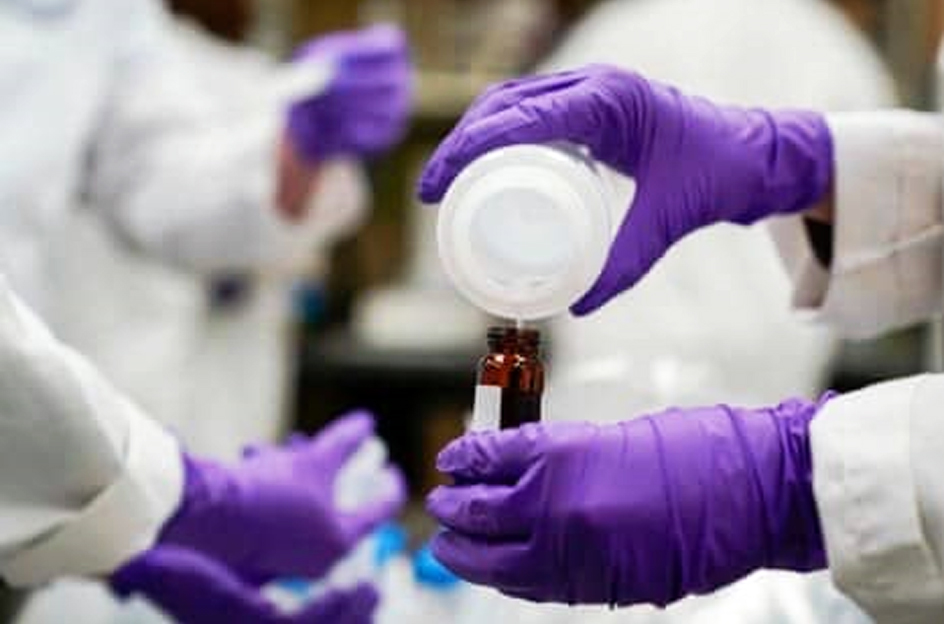NEWS
Scientists Find Dangerous Chemicalsin the Bodies of Ghanaians ….Breast Milk of Lactating Mothers Contaminated with Harmful PFAS
Published
5 months agoon
By
Desert Man
Ghanaian and international researchers have raised alarm over the presence of harmful chemicals known as per- and polyfluoroalkyl substances (PFASs), commonly referred to as “Forever Chemicals, “in the bodies of Ghanaians, including lactating mothers – sparking major health and environmental concerns.
Multiple studies cited by The Chronicle paint a disturbing picture of widespread PFAS contamination in Ghana. These synthetic chemicals are so pervasive that they have been found in water bodies, soil, marine animals, and even the human bloodstream.
PFAS are called “Forever Chemicals” because they do not naturally degrade in the environment. Instead, they persist and accumulate in the human body, often lodging in organs such as the liver, kidneys, lungs, and bloodstream.
They are commonly used in a broad range of consumer and industrial products, including firefighting foams, water-resistant clothing, cosmetics, personal care items, pesticides, nonstick cookware, fast-food packaging, stain-resistant furniture, semiconductor and automotive coatings, and even aerospace and aviation materials. Industrial activity is believed to be a major source of environmental contamination.
Research into PFAS toxicity is ongoing, but existing epidemiological studies already associate them with numerous health risks. According to the U.S. Agency for Toxic Substances and Disease Registry (ATSDR), PFAS exposure may cause elevated cholesterol levels, altered liver enzyme activity, weakened vaccine responses, and pregnancy complications such as hypertension and preeclampsia. There is also evidence linking PFAS to thyroid disease, reduced birth weight, infertility, and cancers of the kidney and testicles.
Evidence from Ho: Breast Milk Contamination
In what is reported to be the first PFAS study of its kind in Sub-Saharan Africa, researchers conducted a clinical investigation at the Maternity Ward of the Ho Government Hospital in the Volta Region to determine the presence of PFAS in human breast milk and evaluate infant exposure.
The study involved 29 lactating mothers aged 18 to 44 years, whose milk samples were collected from December 28, 2020, to June 30, 2021. Researchers gathered samples starting on the first day of birth and continued through the early postpartum period. The milk samples included colostrum, transitional milk, and mature milk.
According to the findings, PFAS – especially PFOS (perfluoro octane sulfonic acid) and PFOA (perfluorooctanoic acid) – were present at seemingly high concentrations, signaling widespread exposure among mothers and their newborns in the region. This suggests infants could be at risk from birth, through breastfeeding.
Evidence from Kumasi: Blood Contamination
A separate study in 2019, conducted in Kumasi and supported by the Norwegian Ministry of Foreign Affairs, investigated serum PFAS concentrations in Ghanaian adults. The research, later published by the U.S. National Institutes of Health (NIH), focused on occupationally exposed populations such as electronic repair workers and lead battery repairers.
Participants ranged in age from 18 to 50 years. The study involved 64 electronic repair workers from Bantama, 64 lead battery repairers from Same Magazine and Asafo Fitting Shops, and a control group of female petty traders working nearby. These participants provided blood and urine samples for PFAS analysis, alongside dietary and occupational questionnaires.

The results showed that female petty traders generally had lower PFAS levels, while electronic repair workers had significantly higher serum concentrations of PFOA—consistent with known industrial uses of PFAS in electronics. Importantly, the study found that blood mercury levels, likely influenced by seafood consumption, also impacted PFAS levels, suggesting that fish may be an important route of PFAS exposure in Ghana.
Approved by the Komfo Anokye Teaching Hospital and KNUST’s Committee on Human Research and Ethics, the study called for broader PFAS monitoring in both adult populations and aquatic ecosystems.
PFAS in Ghana’s Environment: Water and Sediment Findings
In a wider environmental context, a report by The Conversation identified Ghana as one of eleven African countries where PFAS has been detected in surface water bodies. This raises serious concerns that Ghana’s freshwater resources, soil, aquatic life, and by extension, human health, may already be compromised.
Supporting this claim, a research article published in the Oxford Academic Journal investigated PFAS levels in the Volta River. Water and sediment samples were collected for chemical analysis. Although the detected concentrations were lower than those in heavily industrialized nations, the findings confirmed that Forever Chemicals have entered Ghana’s freshwater ecosystems.
The Silent Threat
PFAS exposure, once considered a foreign or industrialized-nation issue, is now a looming public health challenge in Ghana. From mother’s milk in Ho to blood samples in Kumasi, and from contaminated rivers to imported consumer products, Forever Chemicals are quietly accumulating in our lives and bodies.
As scientists continue to unravel the toxic mechanisms of PFAS, it is becoming increasingly clear that the fight against these chemicals must be both scientific and regulatory. Broader monitoring, improved public education, and urgent policy responses will be vital to safeguarding Ghana’s environment—and its future generations. More to come
Note: This story was produced with support from a Science, Technology and Innovation Journalism Pitch Award, funded by the British Government and facilitated through KNUST
Pix1 : Everyday Sources of PFAS Linked to Environmental Contamination in Ghana. Per- and polyfluoroalkyl substances (PFAS), known as “forever chemicals,” are present in a wide range of imported and locally used consumer products in Ghana—including non-stick cookware, cosmetics, firefighting foams, and fast-food packaging. Recent investigations have detected traces of these persistent chemicals in water, breast milk, and blood samples, raising public health concerns due to their long-term environmental and biological accumulation.
You may like
-


Wontumi, Akonta Mining Seek Court Order for Full Prosecution Disclosures
-


Central Regional Minister Hints at Staff Shake-Up at Awutu Senya East Assembly
-


GMet Warns of Localised Thunderstorms Across Accra and Key Cities Today
-


Ghana’s Current Account Surges as Cedi Strengthens in 2025
-


Black Stars Land in Pot 4 for 2026 World Cup Draw as Tough Opponents Await
-


Court Battle Over Daddy Lumba’s Nationality Sparks New Twist in Widowhood Dispute
-


UK Slaps 10-Year Visa Ban on 1,632 Ghanaians as Global Campaign Targets Fraud
-


Otumfuo Leads Final Bid to End the Bawku Conflict as Historic Mediation Nears Climax
-


Kasoa–Winneba Road to Be Completed by June 2026, Says Roads Minister

















